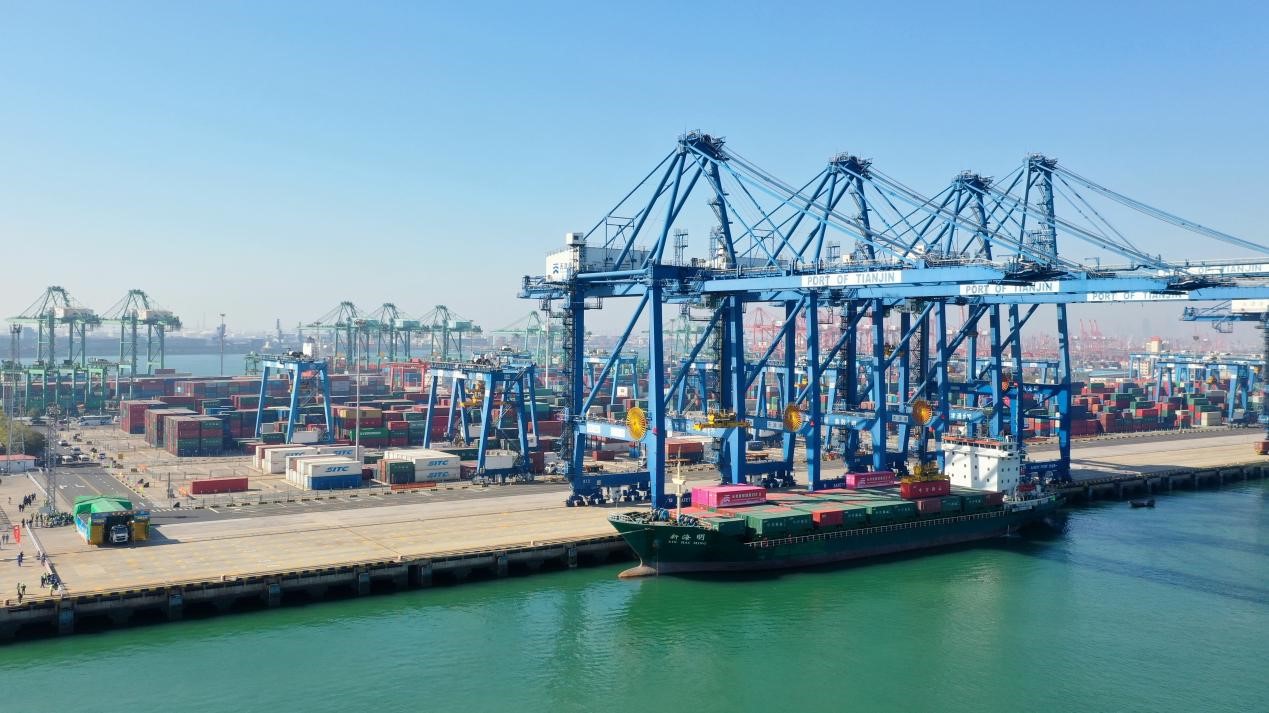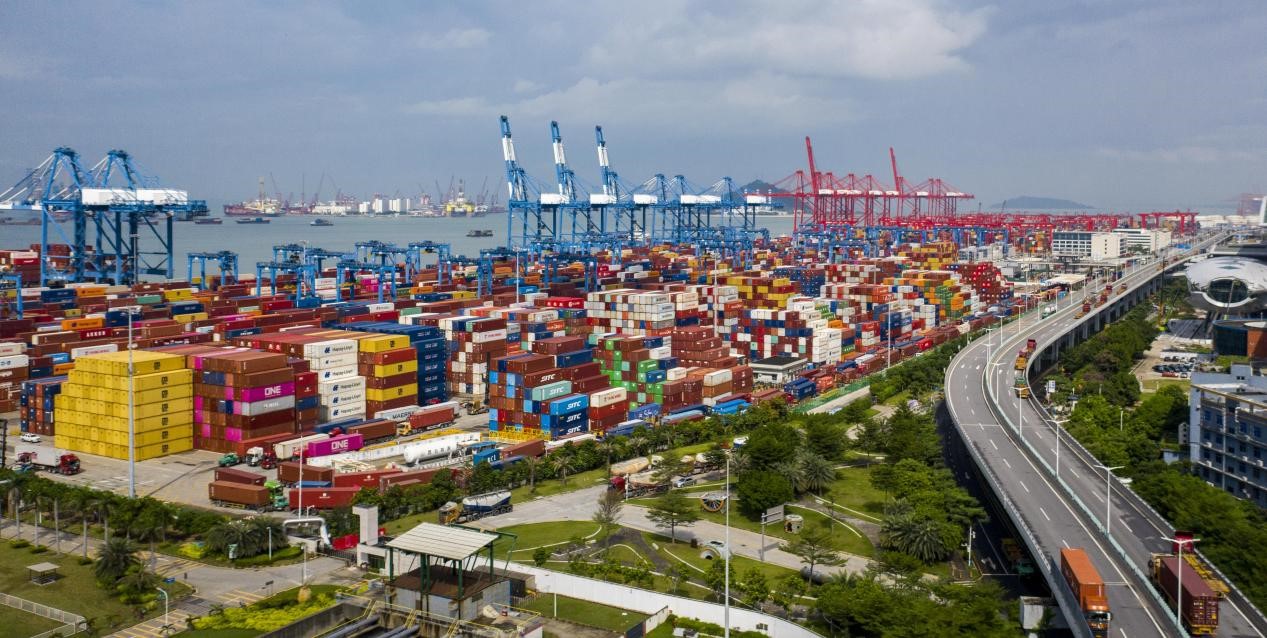China sees accelerated speed of intelligent port construction
An intelligent port is a port that is focused on elevating its level of intelligence on the events and the occurring in the port businesses and their context, and developing the highest level of understanding and/or control on them.
China has made active efforts to build intelligent ports and to lead the intelligent development of ports around the world.

Photo taken on Oct. 17, 2020 shows unattended operation at a container terminal of the Tianjin Port in north China's Tianjin municipality. (People's Daily Online/Zhou Wei)
Smart ports represent a new model of modern port transportation. They integrate traditional port businesses with cloud computing, big data, internet of things and other new-generation information technologies, and feature smart production and management, as well as a strong supportive capability.
Automated ports are an epitome of China's smart port construction, where the loading and unloading of containers, as well as horizontal transport are fully unattended.
On Oct. 13, the Section C of the Beijiang Harbor District, Tianjin Port in north China's Tianjin municipality saw its container throughput exceed 1 million twenty-foot equivalent units (TEUs). It only took the section 33 months to achieve the milestone from its commencement, the shortest in the world. As the first intelligent carbon-zero terminal in the world, it sets a new example for global ports in intelligent upgrading.
At a smart control center of the Section C, there is an ultra high-definition screen that enables operators to unload containers from trucks that are a kilometer away. It only takes around a minute to unload one container.
Operator Feng Xu told People's Daily that all the devices there are driven by electricity, which has significantly lowered operational difficulty and labor intensity.
A 5G-enabled smart port project jointly developed by the Tianjin Port Group, tech-firm Huawei and telecommunication carrier China Mobile has been launched at the Section C. It builds a safe and efficient private 5G network and industrial internet that automatically sense and analyze all factors of production at the terminal, and establishes a smart management system for horizontal transportation that makes science-based decisions for all production devices. Today, all dispatching work of the Section C is done at the smart control center.

Photo taken on Oct. 14, 2021 shows the Mawan Port in Shenzhen, a smart and automated port upgraded from a traditional one in south China's Guangdong province. (People's Daily Online/Wang Meiyan)
Near the Section C, there are two wind turbines that generate ceaseless green electricity for the terminal. The Section C is the first terminal in the world that is fully powered by green electricity and is 100 percent self-sufficient in the supply of green electricity.
Yang Rong, general manager of the Tianjin Port Second Container Terminal Co., Ltd., told People's Daily that the wind turbines have been connected to the national power grid for 10 months and generated 20.77 million kilowatt hours of electricity.
At present, ports across China are accelerating the speed of intelligentization. In March 2018, the Zhoushan Port in Ningbo, east China's Zhejiang province became the first in China to deploy 5G base stations in harbor areas. Today, the port has achieved an automation rate of nearly 50 percent and improved its work efficiency by over 15 percent.
Besides, the Shanghai Port, Xiamen Port and Shenzhen Port have also made a series of innovative outcomes in automation and information connectivity.
According to statistics, China has built 10 automated container terminals, and another eight are currently under construction. Both of the two figures rank first in the world.

A worker controls terminal devices from an intelligent control center of the Tangshan Port, north China's Hebei province, Dec. 11, 2020. (People's Daily Online/Liu Mancang)
An official with the Ministry of Transport said China, upon learning from foreign experiences, has fully grasped the key technologies in the designing and construction of automated terminals, equipment manufacturing, integrated systems and management, turning from a follower to a global leader.
A number of automated terminals around the world adopt Chinese technologies and standard, including the Haifa Port in Israel and the second phase of the Khalifa Port in the United Arab Emirates.
In January this year, the State Council issued a development plan, encouraging ports to implement intelligent upgrading programs for their terminals. The plan also proposed to build new-generation ports such as the Haixing Port in Shenzhen and the Qinzhou Port in south China's Guangxi Zhuang autonomous region, and pilot auto-driving freight collection and distribution programs.
Jiangsu and Henan provinces have successively launched plans to build automated and intelligent ports. The Tianjin Port Group, in collaboration with multiple scientific institutions, universities and leading enterprises, established a laboratory for smart port innovation to build an industry-university-research institute ecosystem and promote digital innovation of the port business.
Photos
Related Stories
- Chinese ports' container throughput maintains expansion in January-October
- China speeds up efforts to expand, renovate expressways
- Yantai Port in E China paves way for China-Africa two-way logistics channel
- China's transport investment up 6.3 percent in first three quarters
- Interview: China's COSCO bid big win for Hamburg port, says CEO
Copyright © 2022 People's Daily Online. All Rights Reserved.









